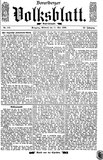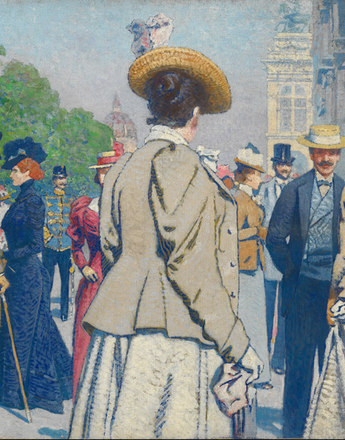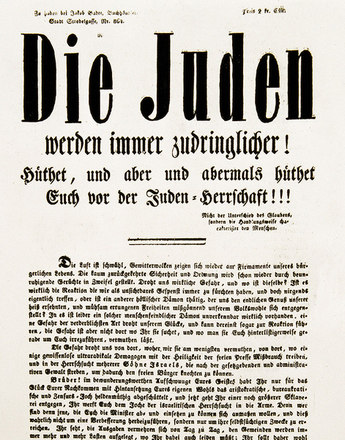Antisemitism as a political movement
The decline of political liberalism towards the end of the 19th century was accompanied by a surge of anti-Semitic movements. In Vienna, anti-Semitism manifested itself at political level in two competing directions: in German-National and Christian-Social anti-Semitism.
The last decade of the 19th century saw a change of generation in the middle class. The generation hitherto characterised by liberalism and constitutional demands was replaced by a new middle class that focused less on humanist ideals. Instead of an egalitarian demand for integration and the subjecting of power to constitutional principles, they supported a nationalist change that excluded Jews. This reversal of social trends expressed itself in the anti-Semitic position of the Austrian political parties. In the two decades before the First World War, political anti-Semitism became socially acceptable and anti-Semites were promoted to influential positions.
Within the German National movement, Georg Ritter von Schönerer was the driving anti-Semitic force and one of the first to introduce anti-Semitism into politics. Schönerer combine his rejection of the Habsburg monarchy, liberalism and capitalism with a racially defined anti-Semitism that incited violence. His hostility to the Jews was even directed towards baptised Jews, being convinced that "the Jewish" was a determinant that demanded the social exclusion of Jews as members of an alien "race". The core of his racial anti-Semitism was a concept of race that did not permit assimilation. In accordance with this conviction, he introduced the Twelfth Clause into the Linz Programme in 1885, thus giving it a clearly anti-Semitic focus: "In order to implement the intended reforms, the elimination of Jewish influence in all fields of public life is indispensable."
The racial anti-Semitism of the German National movement was decisively influenced by the German student fraternities, which based their stance on the allegedly scientific nature of racism and displayed enormous anti-Semitic zeal. They penetrated all organisations in which students and graduates played a leading role.
Although Schönerer was unable to mobilise the masses and did not achieve any major electoral successes, he was nevertheless decisively involved in establishing anti-Semitism in Austria's political landscape.
Translation: David Wright
Literatur:
Beller, Steven: Wien und die Juden 1867–1938, Wien/Köln/Weimar 1993
Bunzl, John/Marin, Bernd: Antisemitismus in Österreich. Sozialhistorische und soziologische Studien, Innsbruck 1983
Pulzer, Peter: Die Entstehung des politischen Antisemitismus in Deutschland und Österreich 1867 bis 1914, Göttingen 2004
Schubert, Kurt: Die Geschichte des österreichischen Judentums, Wien/Köln/Weimar 2008
Weiss, John: Der lange Weg zum Holocaust. Die Geschichte der Judenfeindschaft in Deutschland und Österreich, Hamburg 1997
-
Chapters
- Antisemitism: A historical definition
- Jewish life in the Habsburg Empire
- Anti-liberalism – anti-capitalism – anti-Semitism
- Antisemitism as a political movement
- "I decide who is a Jew"
- The social exponents of Austrian anti-Semitism
- Anti-Semitism in other nationalities within the Habsburg Monarchy
- The Habsburg Monarchy as the guarantee of pluralistic identities
- Jewish soldiers in the Austro-Hungarian army
- The "Eastern Jews" as a pivotal point for anti-Jewish agitation
- The breakdown of the internal peace





